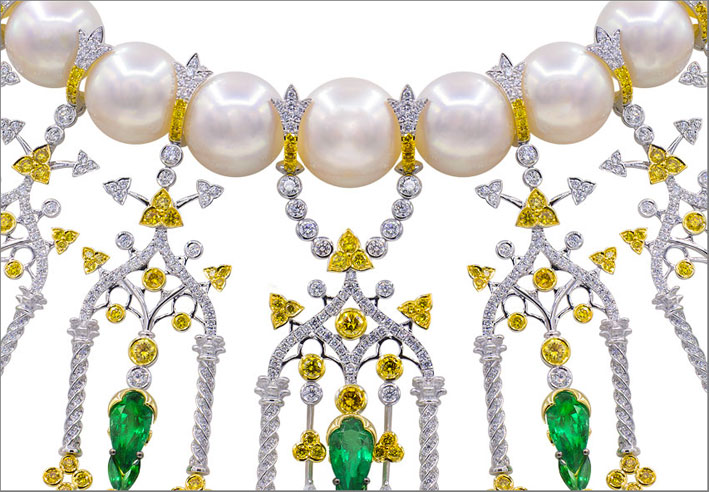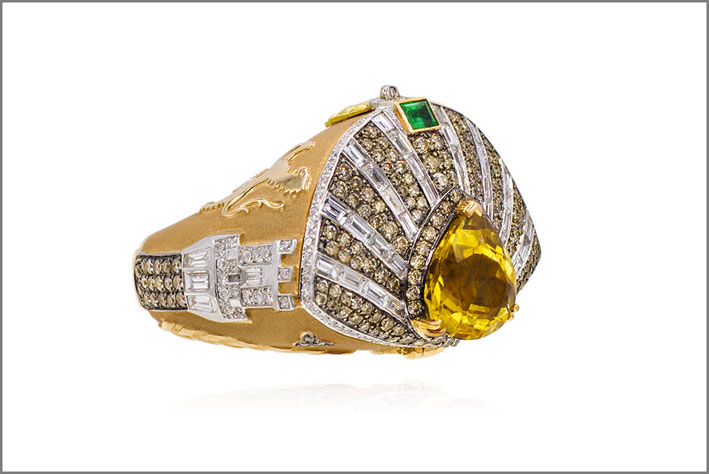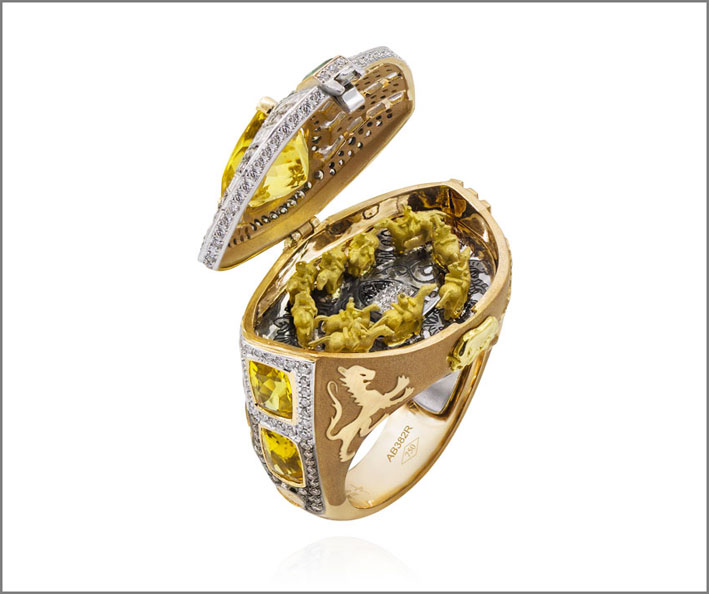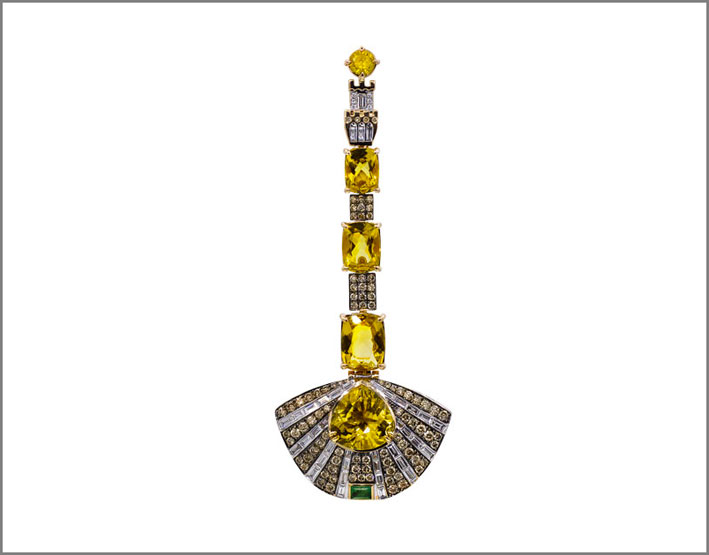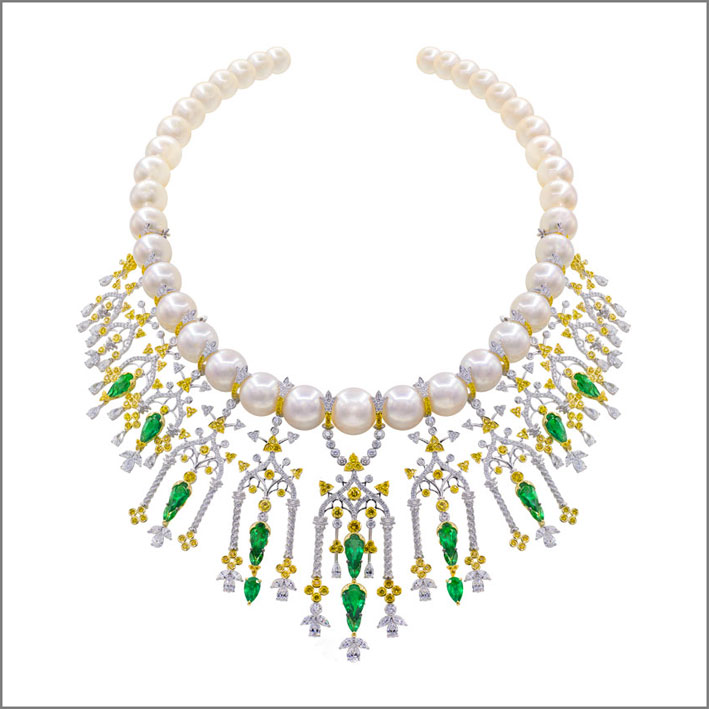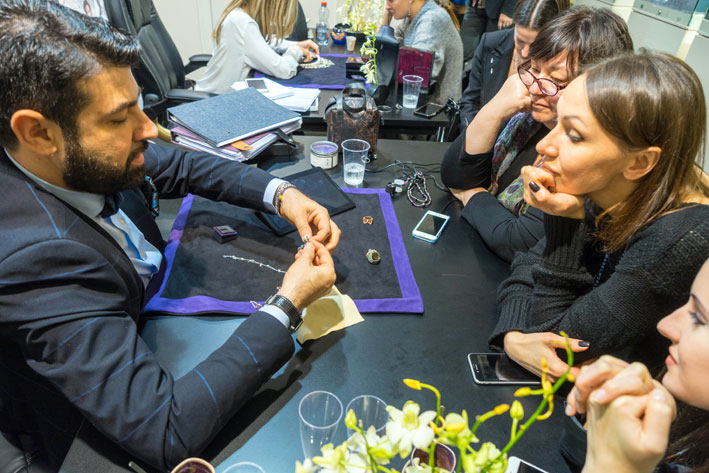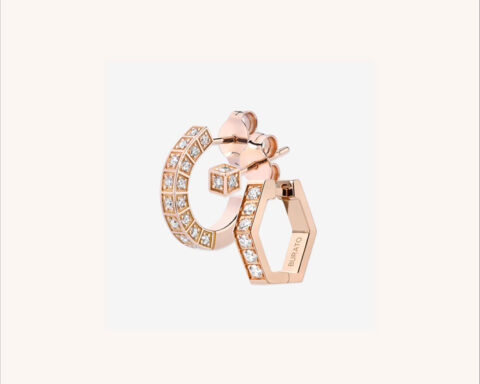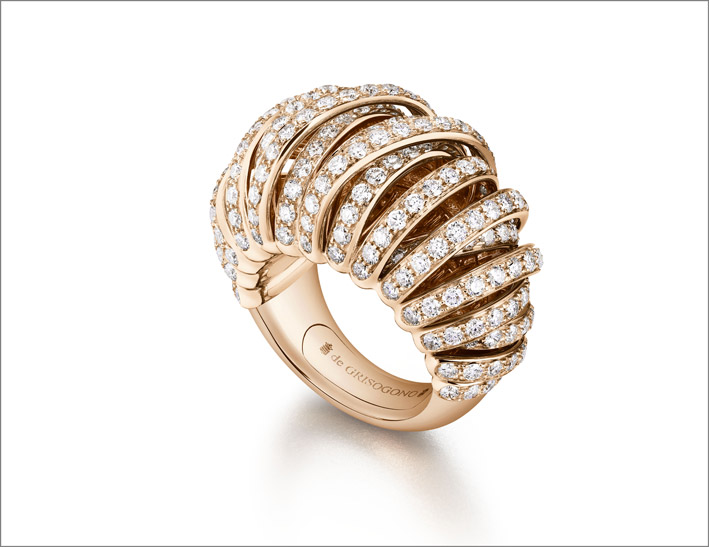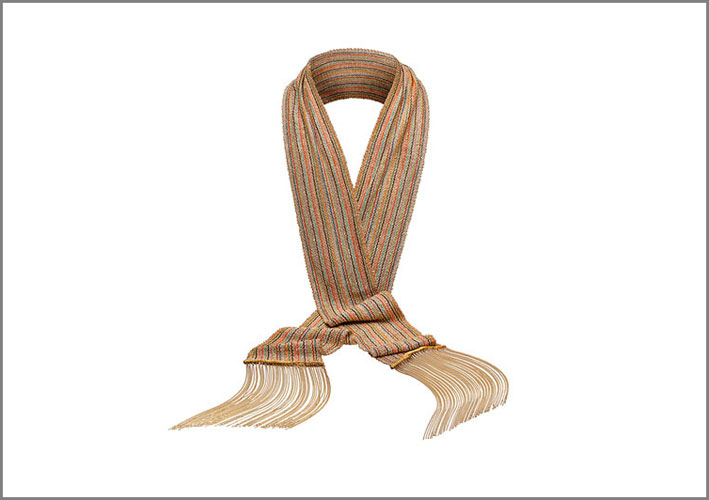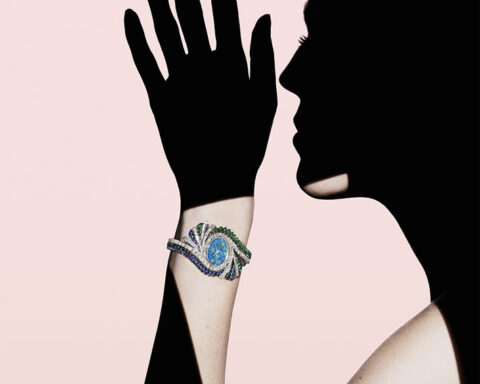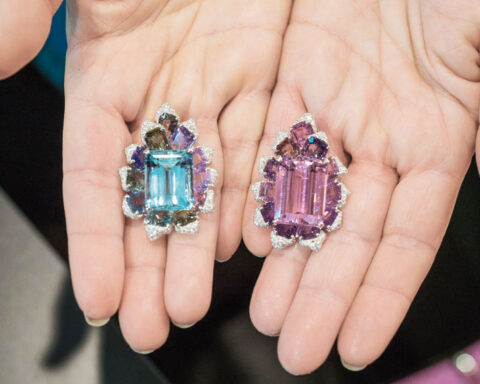A Gran Tour at Couture by Alessio Boschi: palaces and wonders of Renaissance Italy are transformed into surprising jewels ♦ ︎
Alessio Boschi, magician, genius, designer, artist: difficult to find a definition for an heir of the Renaissance who tries his hand at jewelery. And the reference to the historical period is not accidental, because Alessio Boschi has for years undertaken a sort of Grand Tour in Italy, including monuments and masterpieces that have made the Peninsula famous.
Some of these exceptional pieces Alessio Boschi brought them to the Couture of Las Vegas, a selective stage, capable of attracting jewelers of the most different traditions. Certainly, however, Alessio Boschi’s jewels stand out from the others. Let’s take two of them as an example.
The necklace inspired by the Doge’s Palace in Venice, where the Doges’ government resided in the ancient Republic, is made of 18-carat white and yellow gold, with brilliant-cut white diamonds, pear and marquise. There are also yellow diamonds, emeralds with the unusual marquise cut, pearls from the South Seas, 12 other natural Colombian emeralds in the shape of a bright green pear. All this to recreate the atmosphere of the Venetian Gothic style of the Palazzo Ducale, built between the twelfth and sixteenth centuries, which was the residence of the Doge and seat of the Grand Council. The Doge was the supreme authority of the Republic of Venice and the palace contained the Doge’s apartments, as well as the large assembly hall where political, economic and military issues were discussed.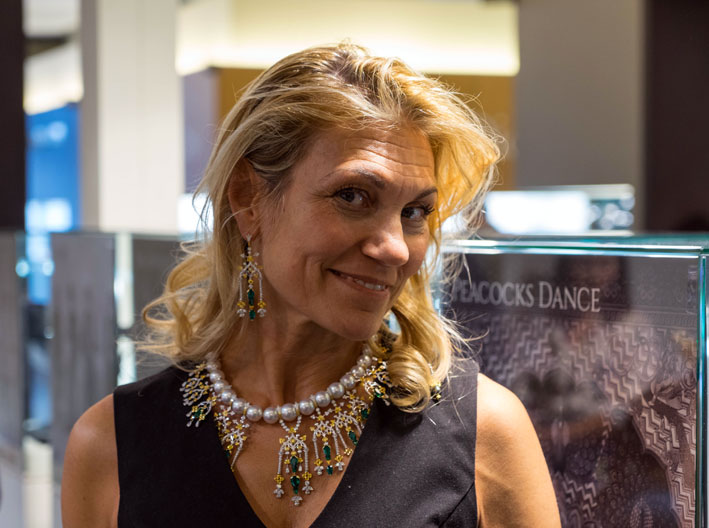
Typical of Alessio Boschi it’s also explain to you how the architectural and artistic details have influenced his work. The palace door, for example, was built in 1442 and features intricately carved Istrian marble, spiral columns and windows decorated with the typical four-lobed Venetian motif. The same design that is then found in the necklace. The extraordinary elegance of the composition is framed by a large window covered with a dark honey-gray color: these are the round lead glass produced on the nearby island of Murano for the medieval and Renaissance palaces of the most aristocratic residences in Europe. Several geometric patterns and a few statues adorn the edges of the carved marble door. This door together with the facade of the building were the main inspirations of the necklace and its three pairs of removable earrings adorned with white yellow diamonds and imaginative and exquisite Colombian emeralds arranged with architectural motifs and hanging from a beautiful pink wire of the South Sea Pearl. As you know who knows Alessio Boschi, his goldsmith virtuosity always hides a surprise: in this case, an element of the necklace can be detached to be used as an earring.
Another piece in this ride through the beauties of italian Renaissance is the set dedicated to Siena, a Tuscan city where from the seventeenth century the Pallium runs twice a year, that is an equestrian race with the jockeys that mount the horses bareback, without saddle , around the main square of the city. It is a historical show, with music, flags and Renaissance costumes, as well as a typhoon of the 17 contrade that challenge each other. The ten riders participating in the race must complete three laps in Piazza del Campo in less than 90 seconds. The square is surrounded by historical palaces of the Middle Ages, in red brick.In the upper part of the square there is an exquisite Renaissance fountain (Fonte Gaia) of 1419. And here is the fountain reproduced in the ring by Alessio Boschi, through a square emerald in the pink gold ring and champagne diamond pavé that re-elaborates the architecture of the Siena pizza with the same proportions. Other white diamonds with baguette cut draw the triangles in which the place is divided. Do you think this gem is quite imaginative? Yet there is also an other surprise here: the ring opens revealing a micro race of horses of the different districts, with the symbols that are applied around the ring. The historic palace that overlooks the square is instead symbolized by a cushion-cut yellow beryl.
But that is not all. Dominating the square is the Torre del Mangia, which is named after its nickname of its last greedy custodian (Mangia in Italian means “he eats”). The bell tower was built in the first half of the fourteenth century to exceed the height of the rival Florence and has a clock that is also reproduced on the side of the ring. But this jewel is also matched with earrings that resemble the same architectural motifs. The earrings are decorated with a tower-shaped clip on the back of two elongated bell towers. And here’s the surprise the lower part can open up to make room for a cascade of chains and horses.
